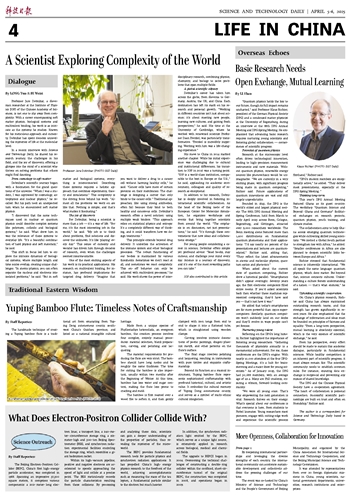
The Beijing Electron-Positron Collider (BEPC), China's first high-energy particle accelerator, was completed in 1988. Spanning an impressive 57,500 square meters, it comprises various components: a 202-meter-long electron linac, a transport line, a 240-meter-circumference storage ring, a six-meter-high and 500-ton Beijing Spectrometer (BES), and synchrotron radiation experimental facilities encircling the storage ring, which resembles a giant badminton racket.
Within its high-vacuum pipeline, positive and negative electrons are accelerated to speeds approaching the speed of light and collide at a precise point. The BES meticulously records the particle characteristics resulting from these collisions. By processing and analyzing these data, scientists can gain a deeper understanding of the properties of particles, thus revealing the mysteries of the micro-world.
The BEPC provides fundamental research tools for particle physics and synchrotron radiation applications. It has propelled China's high-energy physics research to the forefront of the world, achieving accomplishments such as measuring the mass of the tau lepton, a fundamental particle similar to the electron but much heavier.
In addition, the synchrotron radiation light emitted by the BEPC, which serves as a unique light source, is extensively applied in research across biological, medical and chemical fields.
The upgrade to BEPCII began in 2004. Overcoming the technical challenges of constructing a double-ring collider within the confined, short-circumference tunnel of the original BEPC, the construction was completed in 2008, and operations began in 2009.







